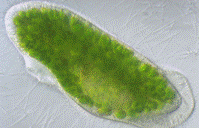Papers in the Biological Sciences
Date of this Version
1987
Citation
Journal of the Arnold Arboretum (1987) volume 68.
Abstract
Seventy-three species were examined for structural and developmental details of the cymules and fruits. The cymules bear one to seven or more flowers and are subtended by one to nine or more bracteoles. Generally, the number of flowers and bracteoles in the pistillate cymules is the same or less than in the staminate ones. Some of the latter have an inner set of bracteoles that could be homologous to the pistillate cupule. Scales are present at anthesis on the cupules of all species examined, but in some species they fail to enlarge, are torn or disintegrate, or fall away as the cupule matures, leaving the cupule essentially naked. In species with scaly cupules at maturity, the scales enlarge and sometimes also become adpressed, thickened, or elongated. Some cupules are intermediate between the naked and scaly ones. Apparently adventitious flowers borne on the outer walls of some cu pules are often abortive flowers of the same cymule that have been elevated by the maturing cu pule of the fertile flower, but in some cases they could be developed from latent primordia that are axillary to the cupular scales.


Comments
Copyright 1987, Harvard University. Used by permission.